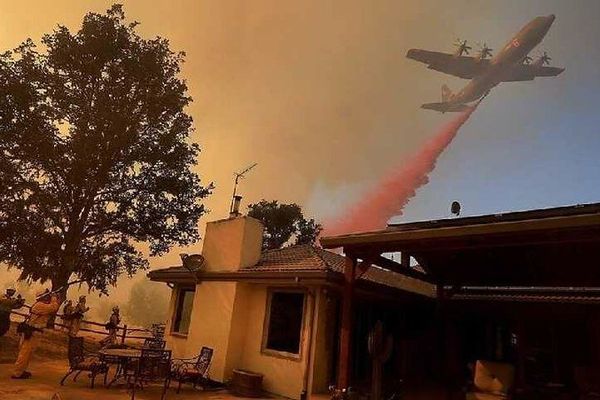
Texas sinkhole linked to old oil well raises environmental concerns
A rapidly growing sinkhole in Upton County, Texas, has formed around a long-plugged oil well, leaking crude oil and threatening groundwater, with no clear responsible party to address the issue.
Martha Pskowski reports for Inside Climate News.
In short:
- The sinkhole formed around Radford Grocery #17, a well drilled in the 1950s and plugged in 1977, and has expanded to 200 feet wide and 40 feet deep, with crude oil surfacing.
- Texas' Railroad Commission, which regulates oil and gas, is monitoring the situation but has not provided a remediation plan.
- The incident is part of a broader problem of aging and failed wells across the Permian Basin, contributing to sinkholes, blowouts, and groundwater contamination.
Key quote:
“It can be fixed. But it’s not going to be cheap.”
— Hawk Dunlap, well integrity expert
Why this matters:
Old and failing oil wells pose serious environmental and public health risks, particularly in regions like Texas’ Permian Basin, where extensive drilling has left behind thousands of abandoned sites. These wells, often improperly sealed or neglected, can leak crude oil, brine, and hazardous gases such as methane and hydrogen sulfide into the surrounding environment. The consequences range from contaminated drinking water and degraded farmland to explosions and air pollution that worsens respiratory illnesses.
An increasing number of sinkholes are linked to failing well plugs, as underground pressure shifts and dissolving salt deposits cause the land to collapse. These geological disruptions pose a serious risk to homes, roads, and critical infrastructure.
The problem is worsened by the difficulty of assigning responsibility. Many of these wells were drilled by companies that no longer exist, leaving landowners and taxpayers to deal with the fallout. While states have set aside funds for well plugging, the scale of the issue far exceeds available resources. Without more stringent regulation and enforcement, communities will continue to bear the costs of an industry that has long reaped the profits.
Related EHN coverage: 17 million in US live near active oil or gas wells














